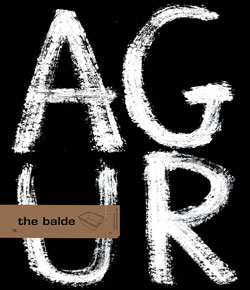get on the bus!
Sure. You have no intention of going to New York. You’ll never board line 1 on the subway to undertake our aforementioned little sociological-geological experiment. Relax, coz you can do our little exercise from the comfort of your own home. In his latest film, The I and The We, Michel Gondry shows us New York and her contemporary citizens, you know, the New York that
doesn’t appear in the guidebooks.
It’s not unusual to come across a teenager who has never been outside of the South Bronx. There are lots of people living in the forgotten boroughs of New York that have never set foot in Manhattan. Michel Gondry’s shaky handheld camera follows a group of teenagers onto a bus as they finish school and start their summer holidays. We follow them around for the rest of the film, almost entirely on the bus. Not only do we set off on a geographical journey through the city, we also take a trip through the daily lives of these young kids born on the losing side of the tracks. For these youngsters what isn’t in their world doesn’t exist. This smart phone-addict generation lives with the pressure of the aesthetic guidelines handed down from their descendents, the question of race, power struggles, etc...The film delves into all of this, their dreams and their foolishness, almost as if it were a documentary.
In his 1995 film Kids, Larry Clark, in the role of the aesthetic, captured the nihilism and meaninglessness of the lives of a group of middle and upper class teens. Gondry’s film shows us the reality of the children born to those who worked for the parents of the rick kids. Literally, Gondry got the idea for the film while he was doing a workshop for the South Bronx organisation The Point (thepoint.org). He recorded the experience of the teens taking part in the workshop and turned them into actors to make the film.
doesn’t appear in the guidebooks.
It’s not unusual to come across a teenager who has never been outside of the South Bronx. There are lots of people living in the forgotten boroughs of New York that have never set foot in Manhattan. Michel Gondry’s shaky handheld camera follows a group of teenagers onto a bus as they finish school and start their summer holidays. We follow them around for the rest of the film, almost entirely on the bus. Not only do we set off on a geographical journey through the city, we also take a trip through the daily lives of these young kids born on the losing side of the tracks. For these youngsters what isn’t in their world doesn’t exist. This smart phone-addict generation lives with the pressure of the aesthetic guidelines handed down from their descendents, the question of race, power struggles, etc...The film delves into all of this, their dreams and their foolishness, almost as if it were a documentary.
In his 1995 film Kids, Larry Clark, in the role of the aesthetic, captured the nihilism and meaninglessness of the lives of a group of middle and upper class teens. Gondry’s film shows us the reality of the children born to those who worked for the parents of the rick kids. Literally, Gondry got the idea for the film while he was doing a workshop for the South Bronx organisation The Point (thepoint.org). He recorded the experience of the teens taking part in the workshop and turned them into actors to make the film.



